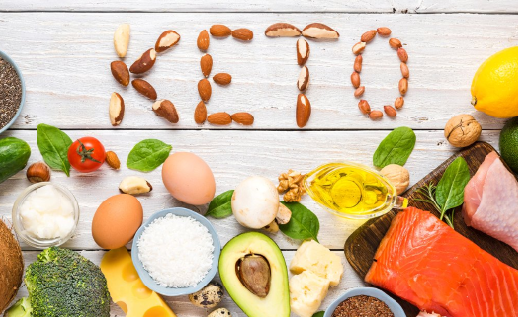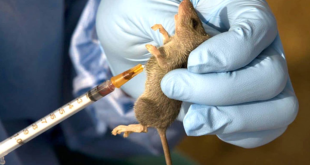What is Keto Diet
The term “keto diet” stands for “ketogenic diet”. This refers to a diet low in carbohydrate and high in fat. During a keto diet, the body is induced into a state known as ketosis. Ketosis is a natural process whereby ketones are produced from the breakdown of fats in the liver. This compels the body to utilize more of fats and ketones for energy. As a result, the body derives many health benefits.

Foods to Eat in Keto Diet.
The foods to eat here depends on how quick you want to arrive at a ketogenic state. In fact, the more you can lower your carbohydrates (if possible less to than 15g per day), the faster you will reach ketosis. In all, try to remember that keto means a diet high in fat, moderate in protein, and very low in carbohydrate.
Do Not Eat:-
Tubers (yams, potato, etc.), sugar (honey, maple syrup, agave, etc.), grains (rice, wheat, corn, cereal, etc.) and fruits (apples, bananas, oranges, etc.).
Endeavor to Eat:-
Meats (beef, fish, poultry, lamb, eggs, etc.), leafy greens (spinach, kale, etc.), above ground vegetables (broccoli, cauliflower, etc.), high fat dairy (hard cheeses, high fat cream, butter, etc.), nuts and seeds (macadamias, walnuts, sunflower seeds, etc.), avocado and berries (raspberries, blackberries, and other low glycemic impact berries), sweeteners (stevia, erythritol, monk fruit, and other low-carb sweeteners) and other fats (coconut oil, high-fat salad dressing, saturated fats, etc.).
What are the Types of Ketogenic Diet?
Several versions of the keto diet exist amongst which the standard ketogenic diet (SKD) remains the most researched and most recommended. The several versions of the ketogenic diet are as follows:-
Standard ketogenic diet (SKD): This is very low in carbohydrate, moderate in protein and high in fat. Typically, this kind of keto diet is made up of 75% fat, 20% protein and only 5% carbs.
High-protein ketogenic diet: This resembles a standard ketogenic diet but the carbohydrate components is lowered a bit to accommodate more protein. Usually the ratio here is 60% fat, 35% protein and 5% carbohydrate.
Cyclical ketogenic diet (CKD): This diet involves intermittent periods of high carbohydrate re-feeding. For instance, 2 days of high carbohydrate diets after every 5 days of ketogenic diet.
Targeted ketogenic diet (TKD): Here one adds carbohydrate around workouts periods.
Benefits of a Ketogenic Diet
Keto diet gives the body numerous health benefits. These benefits span across increased energy levels, weight loss and therapeutic medical applications.
Lowers Blood Sugar
Keto diet lowers blood sugar levels. In fact, when compared to low calorie diets, ketogenic diet has proved to be a more effective way of managing and preventing diabetes. If anyone is diabetic or about being diabetic, a ketogenic diet will be of serious help.
Loss of Weight
Because ketogenic diet uses our body fat as an energy source, weight loss benefits are inevitable. When on keto diet, insulin a hormone that stores fat drops which helps the body to effectively burn fat.
Increased Body Energy
Fats are the most effective molecule to burn as fuel. Naturally, fat gives more satiety than any other class of food. This gives our body a better and more reliable energy source.
Increased Mental Performance
Ketones remain great source of fuel for the brain. Sequel to this, many people use the ketogenic diet to specifically increase their mental productivity.
Lowers Blood Pressure
Many studies has shown that low carbohydrate diets improves blood pressure better than other diets. Besides, some blood pressure issues are associated with excess weight. Fortunately, keto diet a good recipe for weight loss.
Treatment of Epilepsy
The ketogenic diet is a recipe for treating epilepsy. Even in the midst of just few medications ketogenic diet can be very helpful in controlling epilepsy.
Insulin Resistance
Low carbohydrate, ketogenic diet can help lower insulin levels and thereby reduces the risk of type II diabetes.
Skin Care
ketogenic diet leads to improvements in our skin health, brings about a reduction in skin lesions and skin inflammation.
How to Achieve Ketosis
This is quite simple if you follow these steps in that order:-
- Restrict your carbohydrates: to below 35g total carbohydrate per day.
- Restrict your protein intake: to about 0.8g protein per pound lean body mass.
- Don’t be worried about fat: because this is the primary source of energy on a keto diet.
- Drink enough water: which will help regulate many important bodily functions and also helps control hunger level.
- Start fasting: this can help to boost ketone levels consistently throughout the day.
- Bring on exercise: adding in 20-30 minutes of exercise a day will help you the most of your ketogenic diet, consider.
- Stop taking snacks: taking snacks unnecessarily can slow down the benefits of keto.
How to Minimize Side Effects of Keto
Even though the ketogenic diet is a safe one, there may be some initial side effects while the body is still trying adapt. Usually, this is referred to as the keto flu and ends within a space of few days. Keto flu is usually characterized by poor energy, increased hunger, poor mental function, nausea, digestive discomfort sleep issues, and probably decreased performance during exercise. To minimize these initial side effects, you can try a moderately low carbohydrate diet for the first few weeks. This will help teach the body to burn more fat before you can now eliminate carbohydrate completely.
Conclusion
To get started, just start. There are numerous benefits that come with being on keto diet. These benefits cuts across weight loss, increased energy levels and therapeutic medical applications. Virtually everyone can safely benefit from eating a keto diet.
 Healthveli
Healthveli




